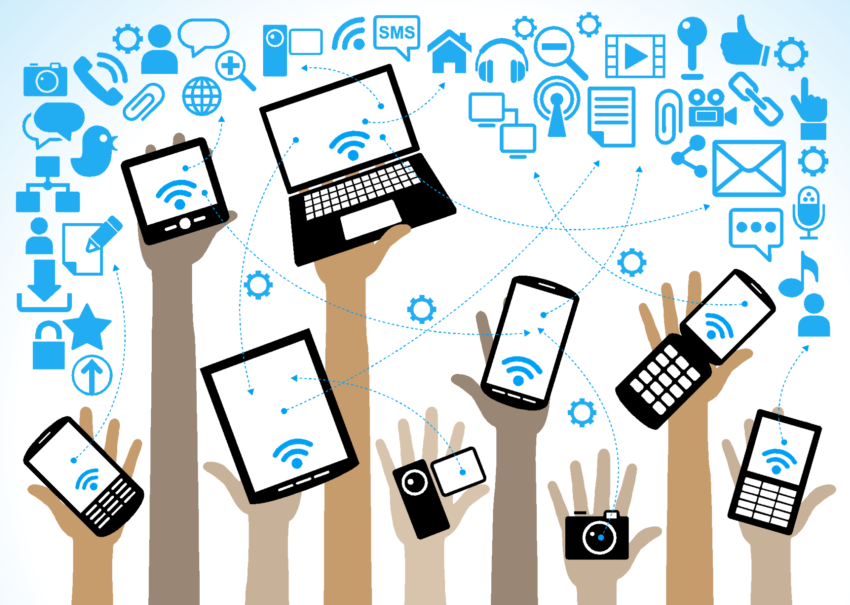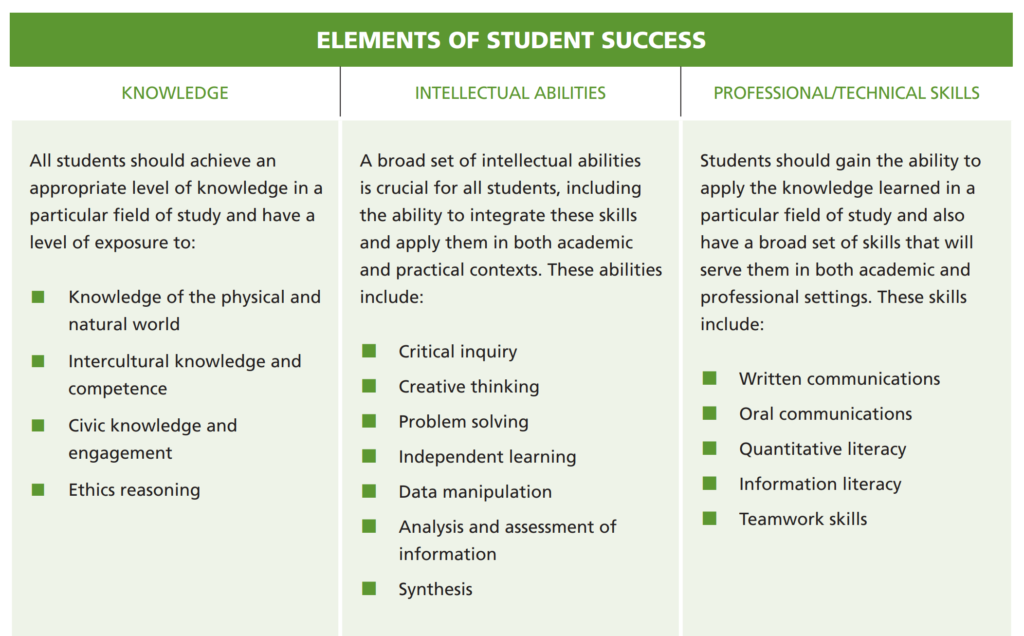Technology in Higher Education: Leveraging Technology to Maximize Student Success in the Digital Era

Inevitably, the rapid advancement of technology has affected education in many ways. Notably, schools and universities worldwide have shifted their paradigm due to the Covid-19 pandemic. Incorporating technology into the classroom must shift face-to-face (F2F) to online classrooms. This way, faculty, and school members are required to comply with this sudden shift. In higher education, stakeholders keep exploring technology to enhance student center learning. Of course, engaging students in online learning is a key to successful learning in higher education.
Higher education plays an essential role in society. Every nation must continue to focus on approaches that make higher education more accessible and affordable for all. It also means that all students who come to college must leave with meaningful, high-quality degrees and credentials to contribute to the workforce and provide for themselves and their families. In other words, colleges and universities must provide high-quality education through quality courses and support student success (Lumina Foundation for Education, 2009).
What is student success?
Schroeder (2011) elaborates on some elements of student success in higher education, including (1) exposure to knowledge in a variety of areas, (2) the development of intellectual abilities necessary for gathering information and processing it, and (3) applied professional and technical skills.

Figure 1. Elements of Student Success (Schroeder, 2011)
As seen in Figure 1, these elements emphasize the importance of connecting theoretical and practical learning. The balance of academic material and the learning context obviously will differ substantially in different education settings, particularly between strictly academic and career-oriented programs. For example, a student studying computer-assisted design at a community college to attain a one-year certificate will experience a different mix and depth of the elements than a student studying anthropology at a research university to attain a master’s degree. Even in the most training-oriented coursework, however, good programs will incorporate broad perspectives into the curriculum because understanding them will enhance students’ professional and personal success in any walk of life.
Furthermore, Schroeder’s elements of student success are in line with Kivunja (2014), who proposed some career and life skills (CLS) domains of the new learning paradigm. The CLS domains involve flexibility and adaptability skills, initiative and self-direction skills, social and cross-cultural skills, productivity and accountability, and leadership and responsibility skills.
Role of Technology in Higher Education
The role of ICTs in education is becoming more and more critical. The higher education sector has advanced with the help of various ICT tools such as smart devices, smart boards, online classrooms, digital cameras, projectors, video conferencing tools, audio recording tools, and many more (Prasad & Gupta, 2020).
With technology, we have an opportunity to make learning more directly relevant by aligning both contents and learning approaches with the immediate and long-term needs and interests of learners and the situations in which they will need to use what they have learned. For example, technology allows learners and instructors to tap resources and expertise anywhere globally, starting with their communities. This ability can be beneficial in expanding opportunities for historically disadvantaged students by providing equity of access to high-quality learning materials, expertise, personalized learning experiences, and tools for planning future education or career pathways.
Some examples of how technology can improve and enhance learning in formal and informal learning settings are reported as follows (U.S. Department of Education & Office of Educational Technology, 2017):
- Technology enables students to access learning opportunities apart from the traditional barriers of time and place.
- Technology lets students access learning opportunities outside formal higher education institutions, such as at their workplace or in community settings.
- Technology allows students to access high-quality learning resources, regardless of their institution’s geographical location or funding.
- Technology enables enhanced learning experiences through blended learning models.
- Technology supports students based on individual academic and non-academic needs through personalization.
- Technology can ensure that students with disabilities participate in and benefit from educational programs and activities.
Leveraging Technology to Maximize Student Success
Technology in education and the proper devices in students’ hands help prepare them with the career and technical skills they need to succeed today and in tomorrow’s workforce. Therefore, higher education institutions are encouraged to support students to attain their learning goals.
Higher education will consist of many diverse learning experiences for most students, including institution-based learning, online coursework, continuing education, workforce training, and personal pursuits. Learners will be most successful as they progress through these experiences if they are supported by a robust educational infrastructure that connects these experiences and translates these experiences into verified competencies, skills, and expertise that they own, and that can help them along future academic or career pathways (U.S. Department of Education & Office of Educational Technology, 2017).
U.S. Department of Education & Office of Educational Technology (2017) further suggests some recommendations to integrate infrastructure that supports information-driven student success.
- Institutions can ensure that their digital infrastructure provides students with a mechanism for mapping learning and skills mastery to stackable and portable credentials.
- Institutions should ensure controlled access and protection when using student data.
- Learning experiences enabled by technology should be accessible for all learners, including those with special needs.
- Institutions can ensure ubiquitous access to connectivity and devices.
- Institutions can have clear Responsible Use Policies (RUP) to promote responsible use and protect student privacy.
On the other hand, since technology promotes personalized learning, students can be empowered to take ownership of their learning. This point aligns with the ISTE student standards (ISTE, 2021). This way, they grow in multiple ways and discover things about themselves they would never discover in a lecture-only classroom. Importantly, technology enables students to access learning opportunities apart from the traditional barriers of time and place. These are the intangibles they will use in life long after the content you taught has faded away.
Moreover, through personalized learning, students involve self-reflection and self-regulation. Panadero (2017) claimed that self-regulated learning (SRL) is one of the most critical research areas in education over the last two decades, including the cognitive, metacognitive, behavioral, motivational, and emotional/affective aspects of learning the data available to researchers. Following the lead, a unified evolving personalized learning model can be generated to provide learners with a more satisfied and engaging learning experience that considers diverse needs and goals.
To conclude, leveraging technology to maximize student success in higher education can be successfully attained with the support of some stakeholders, such as the institutions, teachers, and students. All parties should collaborate hand in hand to achieve learning goals.
References:
ISTE. (2021). ISTE Standards: Students. https://www.iste.org/standards/iste-standards-for-students
Kivunja, C. (2014). Teaching Students to Learn and to Work Well with 21st Century Skills: Unpacking the Career and Life Skills Domain of the New Learning Paradigm. International Journal of Higher Education, 4(1), 1–11. https://doi.org/10.5430/ijhe.v4n1p1
Lumina Foundation for Education. (2009). A stronger nation through higher education. Education, February.
Panadero, E. (2017). A review of self-regulated learning: Six models and four directions for research. Frontiers in Psychology, 8, 422. https://doi.org/10.3389/fpsyg.2017.00422
Prasad, C., & Gupta, P. (2020). Use of ICT to Enhance the Learning Process in Higher Education. International Journal of Education (IJE), 8(4), 97–102. https://doi.org/10.5121/ije.2020.8409
Schroeder, S. (2011). Student success in higher education. AFT Higher Education, 1–24. http://www.aft.org/pdfs/highered/studentsuccess0311.pdf
U.S. Department of Education, & Office of Educational Technology. (2017). Reimagining the Role of Technology in Higher Education. U.S. Dept. of Education – Office of Educational Technology, January, 107. https://tech.ed.gov/files/2017/01/Higher-Ed-NETP.pdf

Melissa
I really like how you are looking at technology as a way to enhance/promote student success. Students of today, especially millenials and generation Z, already come to school knowing so much about technology, it only makes sense to incorporate technology aspects into our classrooms to help promote and encourage their success as students.
Melissa Dunworth
Hi Ignasia, I really like that you are leveraging technology to improve student success. Our Gen Y and Gen Z students are so immersed in technology it makes perfect sense to meet them where they are and help them to use the tools to enable their own success.
Nina Vizcarrondo
Ignasia,
What a refreshing post to read about technology in higher education and its impact and ties to preparing our next corporate skilled workforce. My interests are also in higher education, which is why I enjoyed it so much. You mentioning and distinguishing how does technology look like in academic versus career-oriented paths, bring up questions I had not considered before. Thank you for emphasizing the importance of community before taking expertise elsewhere. I am very interested in place-based learning and you made me think of what that looks like in higher ed learning remotely. Your post highlights the symbiotic relationship between student and institution, which many platforms at times ignore. The institution definitely benefits from the student attending, so providing responsible use and safe data protection protocols should be expected.
Thank you for your post!